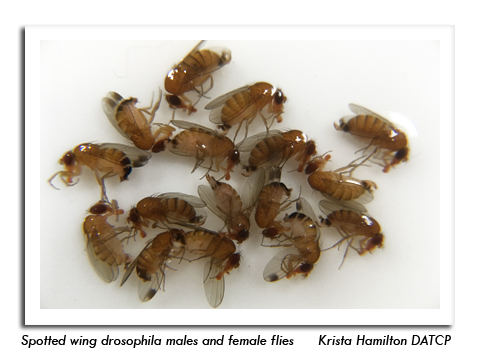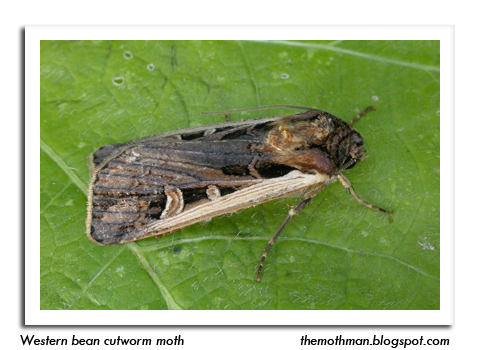
 |
|
|
Looking Ahead
Volume 62 Number 13 Date 07/27/2017 SPOTTED WING DROSOPHILA - Emergence has surged since early July and is expected to intensify in August. Inspecting fruits for larvae, installing exclusion netting, and maintaining protective insecticide coverage are all important measures for protecting berry crops from SWD at this time. Chemical spray programs, alternating at least three different materials with different modes of action, should be initiated as fruit begins to color and continue every five days through harvest, with consideration of pre-harvest and reentry intervals. Cooling harvested berries to 34°-36° F until sale is also recommended to slow development of larvae and eggs. Eliminating all overripe or rotting fruit on plants or on the ground is also critical for reducing refuge for SWD populations. JAPANESE BEETLE - Reports suggest that these beetles are more abundant than in the previous several years, and significant damage is occurring in some apple orchards, nurseries and vineyards. Continued weekly scouting is advised in August for apples, corn, grapes, soybeans, and all other susceptible crops as long as beetles are present. WESTERN BEAN CUTWORM - Moth counts have peaked at most southern and central monitoring sites. The cumulative state total as of July 26 is 924 moths in 70 pheromone traps, which is lower than last year's count of 1,185 moths in 75 traps. Captures are expected to peak next week near Wausau across the northern counties. Preliminary results of the 2017 annual trapping survey are summarized in the map in the CORN section. SOYBEAN APHID - Monitoring efforts should be increased in all areas of the state as more fields enter the reproductive stages. DATCP surveys indicate average densities are low at fewer than 10 aphids per plant, though individual fields could develop economic populations early next month. Foliar treatment is not recommended until soybean fields have been thoroughly sampled to determine if the established threshold of 250 aphids per plant on 80% of the plants has been exceeded. CORN EARWORM - Migrants arrived in low numbers for the third week. Although the monthly total count of only 56 moths at 14 pheromone trap locations signals a low risk of earworm infestation as of late July, scouting of silking cornfields should be increased. Trapping network participants are reminded to replace lures on a weekly basis. EUROPEAN CORN BORER - The treatment window for second-generation larvae has opened across southern and central Wisconsin with the accumulation of 1,550 degree days (modified base 50°F). Susceptible corn should be inspected in the week ahead for egg masses and small larvae. Chemical control directed against early-instar corn borers will remain an option until 2,100 degree days have been surpassed, or for approximately 2-3 more weeks under normal August temperatures. -- Krista Hamilton, DATCP Entomologist 



.jpg)

|
|
|